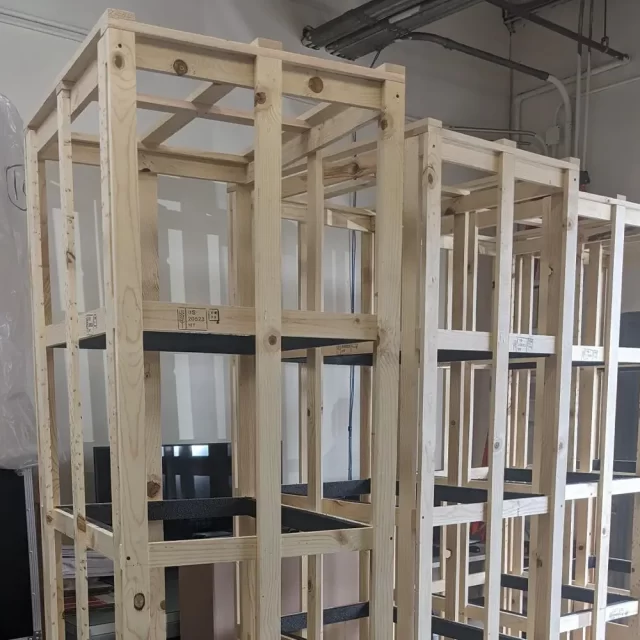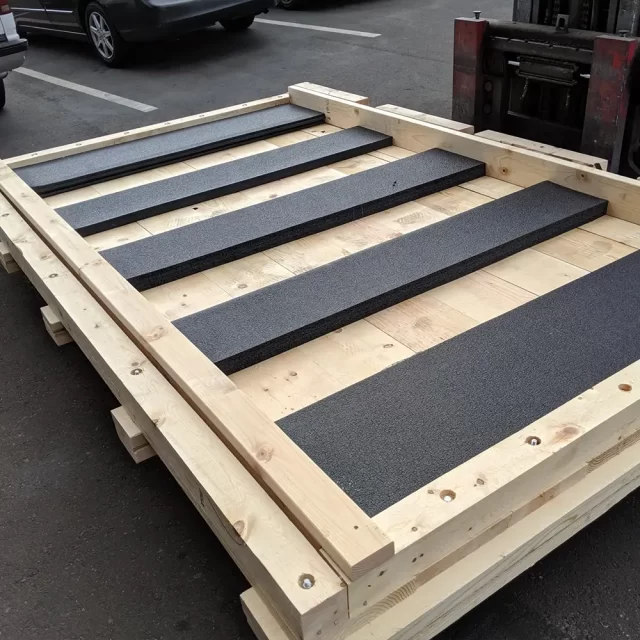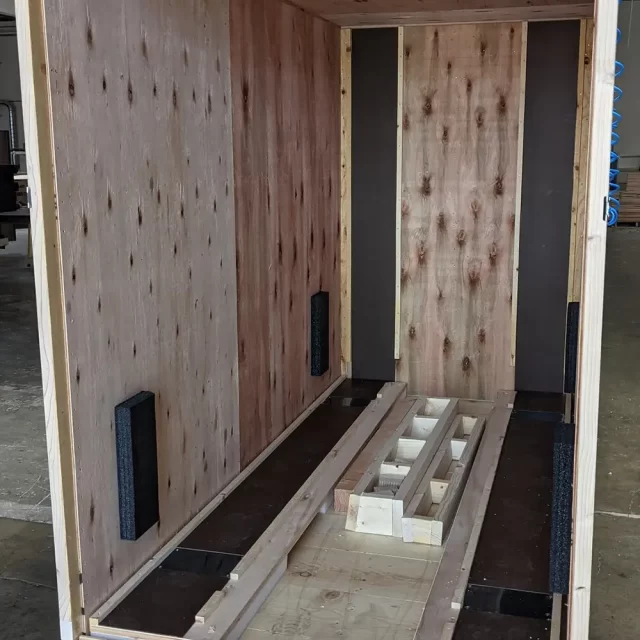Heat Treated International Shipping Crates
$0.00
The demand for international material exports is increasing. Although export laws vary across the countries, the need for heat-treated International Standards for Phytosanitary Measures Number 15 (ISPM-15) compliant wooden crates remain common to most exports.
Description
The demand for international material exports is increasing. Although export laws vary across the countries, the need for heat-treated International Standards for Phytosanitary Measures Number 15 (ISPM-15) compliant wooden crates remain common to most exports. These wooden crates are used for safe and easy international transportation of goods. Often in foreign transport, the chances of infestation are high, thus, ISPM 15 crates are recommended. At BlueRose Packaging, we acknowledge the importance of ISPM 15 heat treated wood crates. We specialize in the design and manufacturing of bark-free heat treated international shipping crates in compliance with ISPM 15 standards.
An Overview of ISPM 15 Heat Treated Wood Crates Offered by BlueRose Packaging
International Standards for Phytosanitary Measures Number 15 (ISPM-15) is a standard developed by International Plants Protection Convention (IPPC). This standard recommends the treatment of international shipping crates to avoid infestation. The treatment of the ISPM 15 crates may include heat treatment or fumigation with methyl bromide. This standard governs all international packaging materials such as pallets, crates, etc.
At BlueRose Packaging, we manufacture ISPM 15 heat treated wood crates that are recognized as bug stamps or HT stamps.
ISPM 15 International Shipping Crate Requirements
BlueRose Packaging is a highly-reputed manufacturer of ISPM 15 heat treated wood crates, we manufacture the international shipping crates by considering all the requirements of ISPM compliance. We ensure that during manufacturing the ISPM 15 heat treated crates, we fulfill the following requirements.
- The ISPM 15 standard for international shipping crates focuses on the prevention of infestation in wooden crates that can potentially damage them.
- Any export-quality wood packaging material (WPM) with thickness over 6mm should be heat treated to prevent infestation. The WPM must be heat treated up to 56°C for over 30 minutes for effective results. This could ensure the prevention of destroying harmful pets in the most effective environment-friendly manner.
- Fumigation of wooden crates with methyl bromide should be done only if for some reason heat treatment cannot be performed.
- Steaming and vacuuming, microwave heating are some of the most user-friendly heat treatment options.
- The heat used for making international shipping crates must possess an IPPC mark, and this is usually done after heat treating.
At BlueRose Packaging, we prefer heat treatment as it is the most effective and eco-friendly way of preventing infestation in international shipping crates.
If you are looking to source, high-quality bark-free ISPM 15 certified wood crates, then please feel free to contact BlueRose Packaging. In case of any queries, please contact our team of experts. We will be happy to assist you.
Contact BlueRose@BlueRosePackaging.com today and get your Quote!
Frequently Asked Questions (FAQs) on ISPM 15 Crates
Our clients approach with us several queries regarding ISPM 15 heat treated wood crates. Here are a few frequently asked questions (FAQs) answered by the experts at BlueRose Packaging.
Q. Why ISPM 15 compliance is essential for the international shipment of goods?
A. The wooden shipping crates are exposed to various environmental conditions during the shipment. These conditions may include humidity, moisture, exposure to dust and dirt, etc which may lead to the growth of bugs, and insects in wooden crates. Prevention of such infestation is essential to secure the goods from damage. However, the way of prevention of infestation should be eco-friendly, as recommended by IPPC via ISPM 15 standards. In order to prevent the worldwide spread of plant pests, ISPM 15 compliance is essential in the international shipment of goods.
Q. What is the regulating agency for ISPM 15?
A. International Plants Protection Convention (IPPC) controls the ISPM 15 regulations. Here, IPPC acts as a part/member of the United Nations Food & Agriculture Organization (FAO).
Q. How to know if the International Shipment is ISPM 15 Compliant?
A. To ensure the ISPM 15 compliance of an international shipping crate, check for HT stamp or bug stamps approved by the IPPC inspecting agency. These IPPC inspecting agencies perform multiple random inspections on the wooden shipping crates to ensure heat-treatment or fumigation of wooden crates. The ISPM 15 wooden crates by BlueRose Packaging are tested by the IPPC inspecting agency and feature HT stamp or bug stamp.
Q. What does the IPPC marking/stamp Indicate?
A. IPPC marking is always enclosed in a rectangle with a vertical line separating identifying data and the IPPC logo. In the identification data presented in form of XX0000YY, the following entities should be verified.
- XX- Two lettered ISO Country Code
- 0000- This next series of 4 digits indicates a unique identification code given by the IPPC inspecting agency.
- YY- Indicates the type of treatment performed on the wood packaging material (WPM), i.e.; Heat Treatment (HT) or Fumigation using methyl bromide.
Q. What is classed as WPM under ISPM 15?
A. WPM stands for wood packaging material (WPM). Under ISPM 15, the materials like coniferous softwood and non-coniferous hardwood are considered WPM. However, this standard excludes wood-based materials like plywood, veneer, etc.
Q. Is ISPM 15 applicable to shipping materials made from processed wood?
A. No, ISPM 15 is not applicable to shipping materials made from processed wood. This regulation excludes shipping materials made from cardboard, plywood, veneer, etc as these materials are manufactured from a combination of wood, glue, heat, and pressure which reduces the chances of infestation.
Q. Is ISPM 15 regulation active in all countries?
A. Yes, ISPM 15 regulation is globally applicable for international shipment. However, the complete information and list of countries can be found on the USDA’s website
If you are looking to source, high-quality bark-free ISPM 15 certified wood crates, then please feel free to contact BlueRose Packaging. In case of any queries, please contact our team of experts. We will be happy to assist you.
Contact BlueRose@BlueRosePackaging.com today and get your Quote!



































